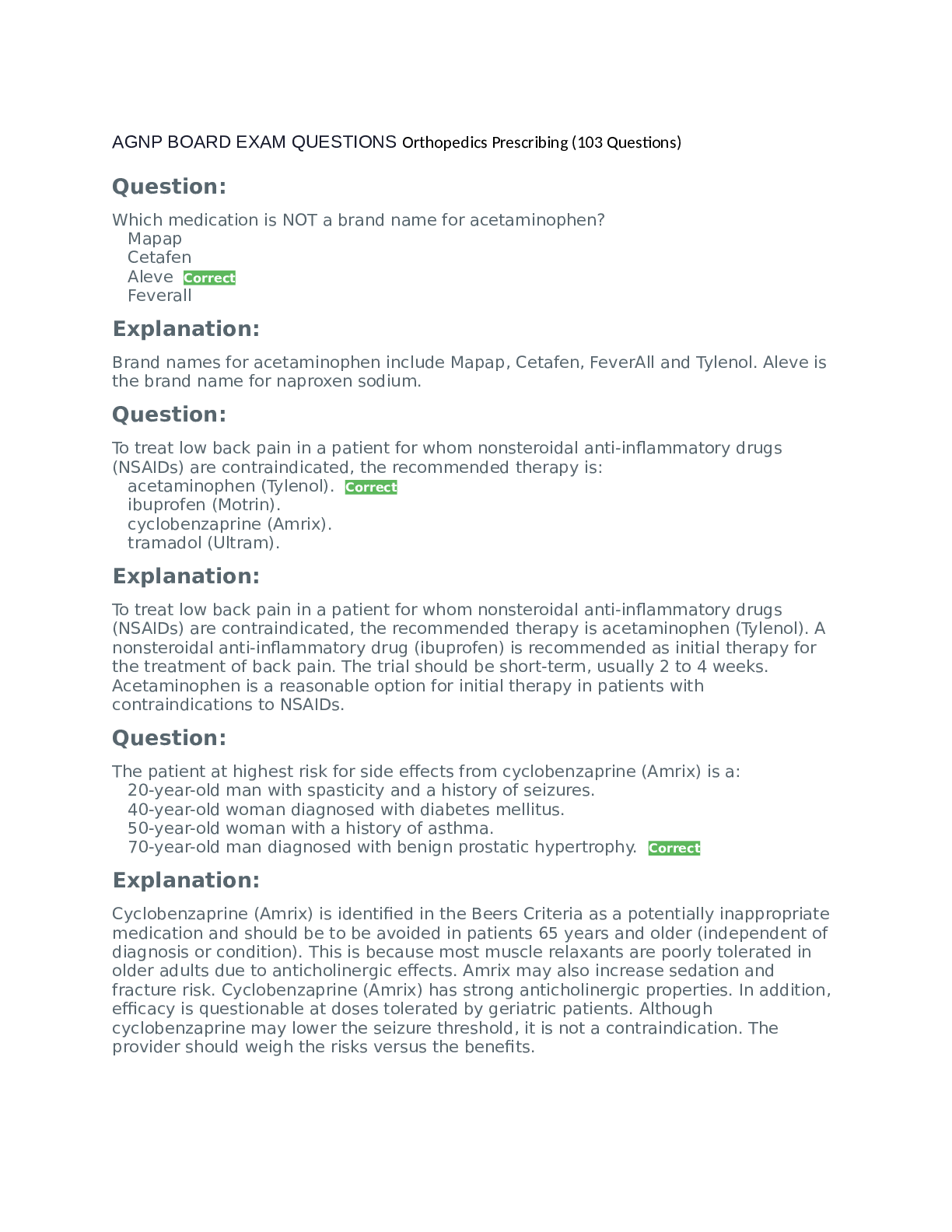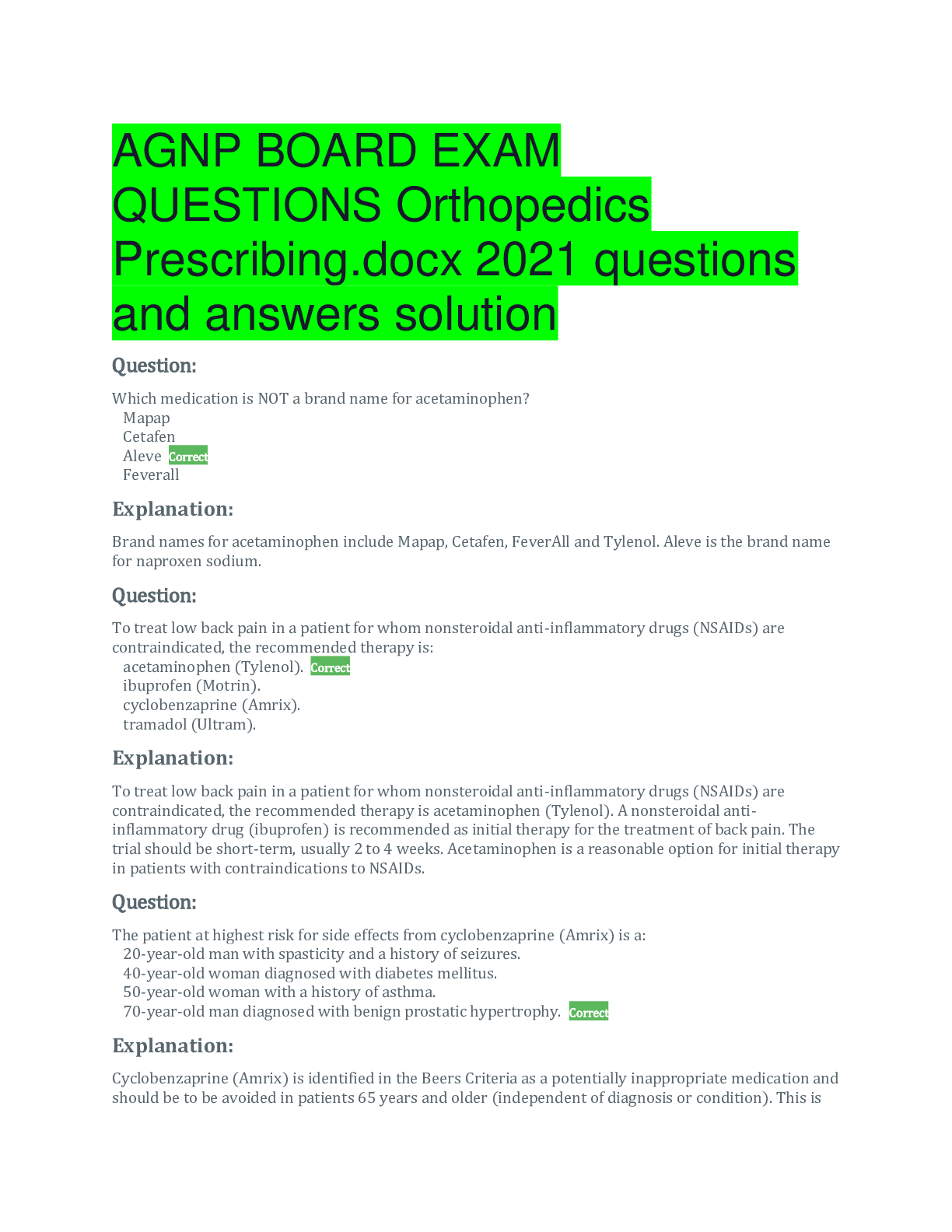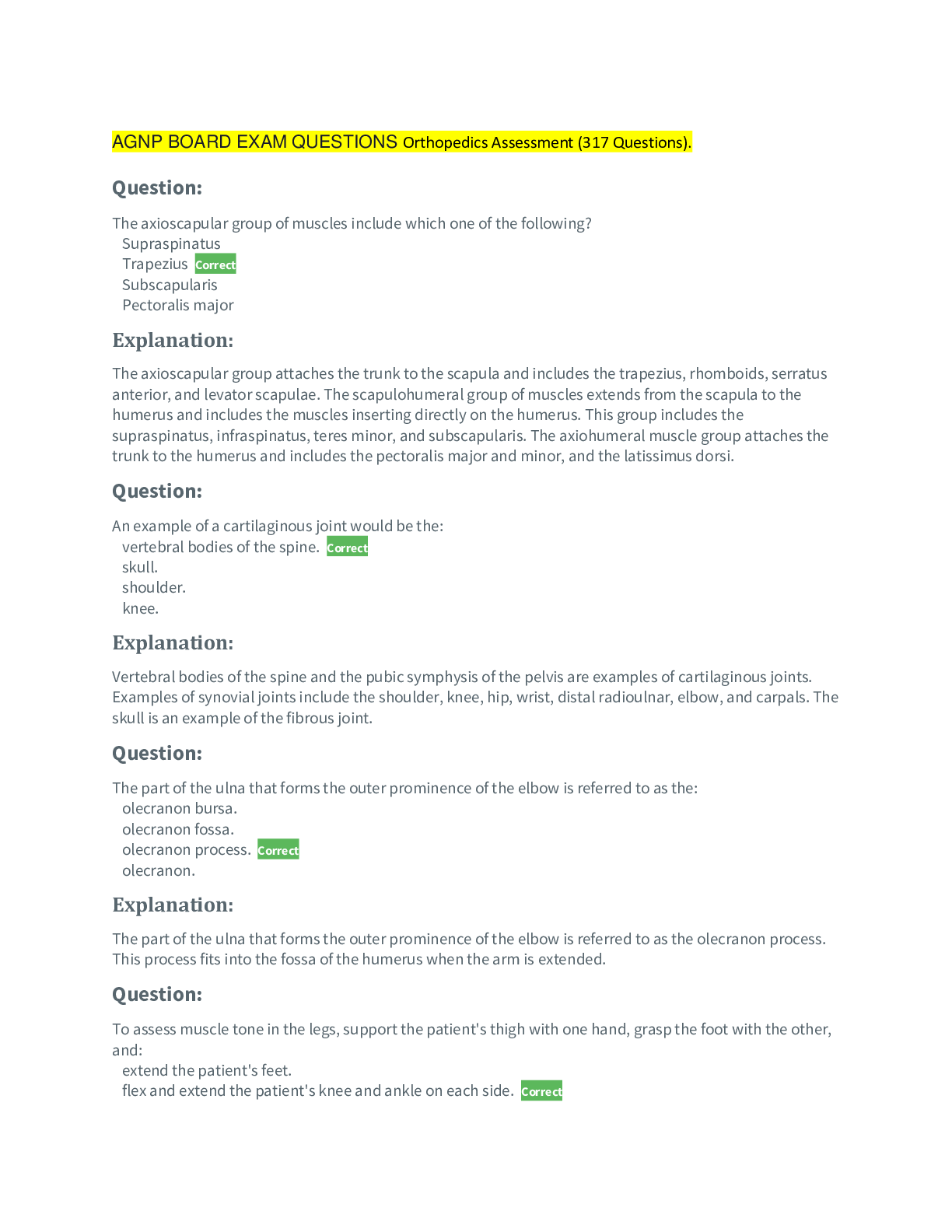*NURSING > EXAM > AGNP BOARD EXAM QUESTIONS Orthopedics Prescribing (103 Questions and Answers) (All)
AGNP BOARD EXAM QUESTIONS Orthopedics Prescribing (103 Questions and Answers)
Document Content and Description Below
AGNP BOARD EXAM QUESTIONS Orthopedics Prescribing (103 Questions and Answers) Question: Which medication is NOT a brand name for acetaminophen? Mapap Cetafen Aleve Correct Fever... all Explanation: Brand names for acetaminophen include Mapap, Cetafen, FeverAll and Tylenol. Aleve is the brand name for naproxen sodium. Question: To treat low back pain in a patient for whom nonsteroidal anti-inflammatory drugs (NSAIDs) are contraindicated, the recommended therapy is: acetaminophen (Tylenol). Correct ibuprofen (Motrin). cyclobenzaprine (Amrix). tramadol (Ultram). Explanation: To treat low back pain in a patient for whom nonsteroidal anti-inflammatory drugs (NSAIDs) are contraindicated, the recommended therapy is acetaminophen (Tylenol). A nonsteroidal anti-inflammatory drug (ibuprofen) is recommended as initial therapy for the treatment of back pain. The trial should be short-term, usually 2 to 4 weeks. Acetaminophen is a reasonable option for initial therapy in patients with contraindications to NSAIDs. Question: The patient at highest risk for side effects from cyclobenzaprine (Amrix) is a: 20-year-old man with spasticity and a history of seizures. 40-year-old woman diagnosed with diabetes mellitus. 50-year-old woman with a history of asthma. 70-year-old man diagnosed with benign prostatic hypertrophy. Correct Explanation: Cyclobenzaprine (Amrix) is identified in the Beers Criteria as a potentially inappropriate medication and should be to be avoided in patients 65 years and older (independent of diagnosis or condition). This is because most muscle relaxants are poorly tolerated in older adults due to anticholinergic effects. Amrix may also increase sedation and fracture risk. Cyclobenzaprine (Amrix) has strong anticholinergic properties. In addition, efficacy is questionable at doses tolerated by geriatric patients. Although cyclobenzaprine may lower the seizure threshold, it is not a contraindication. The provider should weigh the risks versus the benefits. Question: When assessing a patient with suspected acetaminophen (Tylenol) overdose, the time of ingestion can be confirmed by checking: acetaminophen levels now and in 4 hours. Correct baseline acetaminophen levels. liver function studies now and in 4 hours. acetylcysteine levels. Explanation: When assessing a patient with suspected acetaminophen (Tylenol) overdose, the time of ingestion can be confirmed by checking serum acetaminophen levels at the time of presentation and again in 4 hours. This is especially important if the time of acetaminophen ingestion is unknown. Question: A patient with severe osteoarthritis is complaining of a pain exacerbation due to weather change. Ketorolac should be avoided in this patient due to a drug-drug interaction with: diclofenac (Zorvolex). Correct lisinopril (Zestril). omega-3 fatty acids. spironolactone (Aldactone). Explanation: The concomitant use of ketorolac (Toradol) and other nonsteroidal anti-inflammatory drugs (NSAIDs), such as diclofenac (Zorvolex), is absolutely contraindicated due to enhancement of the adverse/toxic effect of NSAIDs. Therapy should be monitored in the presence of ACE inhibitors, omega-3 fatty acids and potassium-sparing diuretics, but it is not contraindicated. Question: The half-life elimination of colchicine (Colcrys), used in the treatment of gout, is approximately: 8 hours. 15 hours. 30 hours. Correct 48 hours. Explanation: The half-life elimination of colchicine (Colcrys) in an otherwise healthy person is about 27-31 hours. Colchicine is an alkaloid indicated for the treatment of acute gout and for the prophylactic treatment of gout. It is approved for use in patients aged 16 and older for gout prophylaxis. Question: Dantrolene (Dantrium) reduces skeletal muscle spasticity by: interfering with the release of potassium from the sarcoplasmic reticulum. interfering with the release of calcium from the sarcoplasmic reticulum. Correct centrally blocking action potentials. blocking the actin-myosin binding site in striated muscle. Explanation: Dantrolene (Dantrium) reduces skeletal muscle spasticity by acting directly on skeletal muscle and interfering with release of calcium ion from the sarcoplasmic reticulum. It is classified as a peripherally-acting muscle relaxant. It is not a centrally-acting muscle relaxant. ............continued [Show More]
Last updated: 1 year ago
Preview 1 out of 31 pages
Instant download
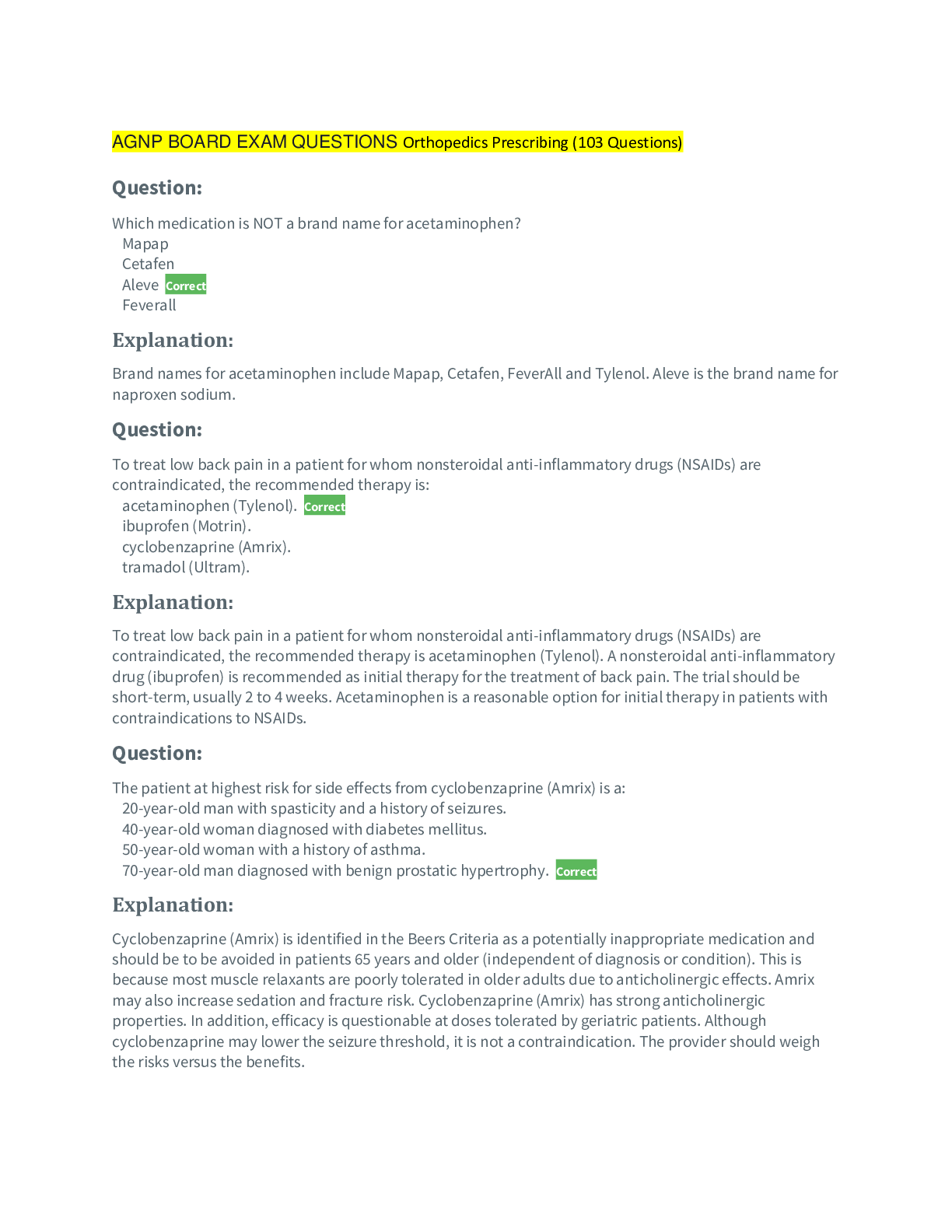
Buy this document to get the full access instantly
Instant Download Access after purchase
Add to cartInstant download
Also available in bundle (1)
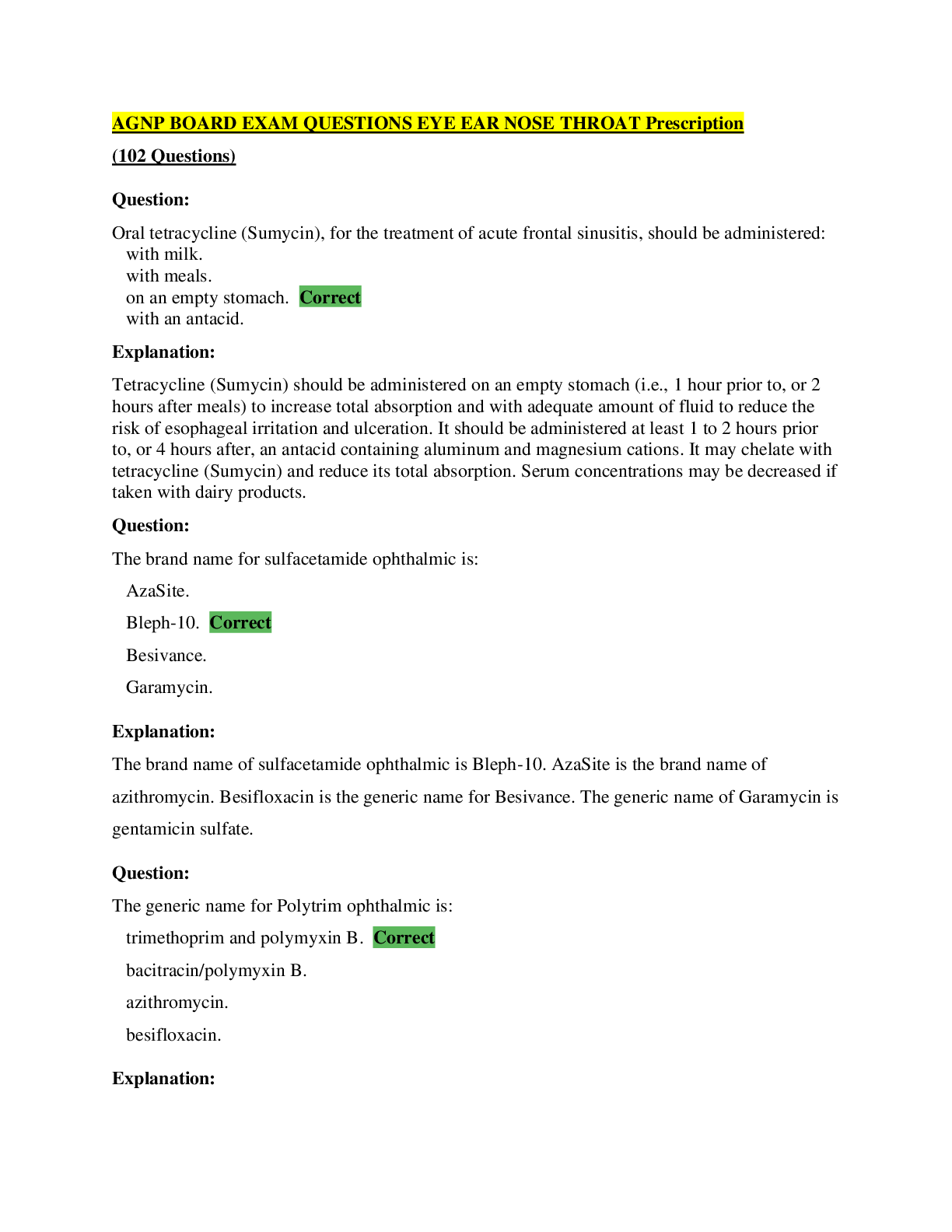
AGNP BOARD EXAMS (23 Different Versions) ; Questions and Answers
AGNP BOARD EXAMS (23 Different Versions) ; Questions and Answers
By YourTutor 3 years ago
$95.5
23
Reviews( 0 )
Document information
Connected school, study & course
About the document
Uploaded On
Feb 01, 2021
Number of pages
31
Written in
Additional information
This document has been written for:
Uploaded
Feb 01, 2021
Downloads
0
Views
52

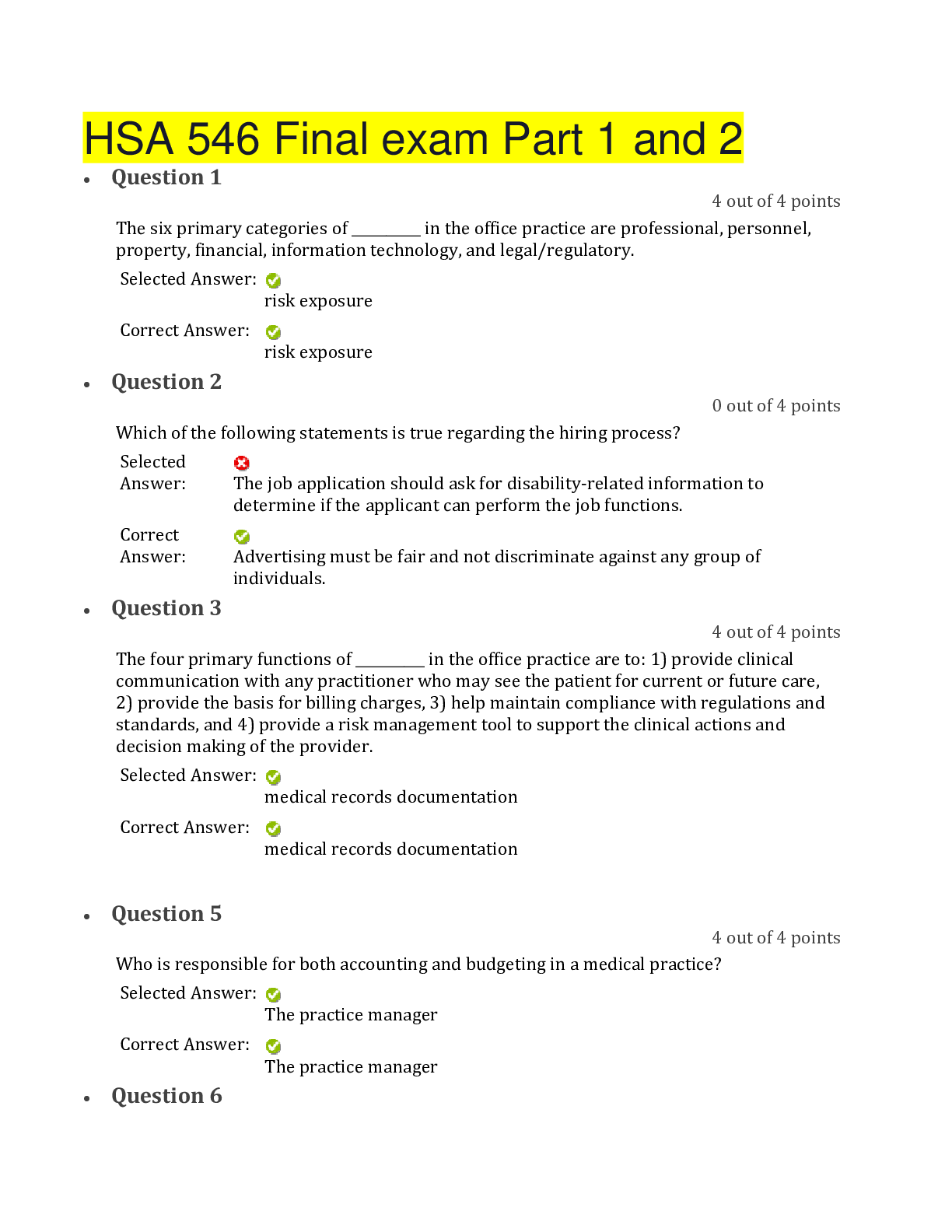




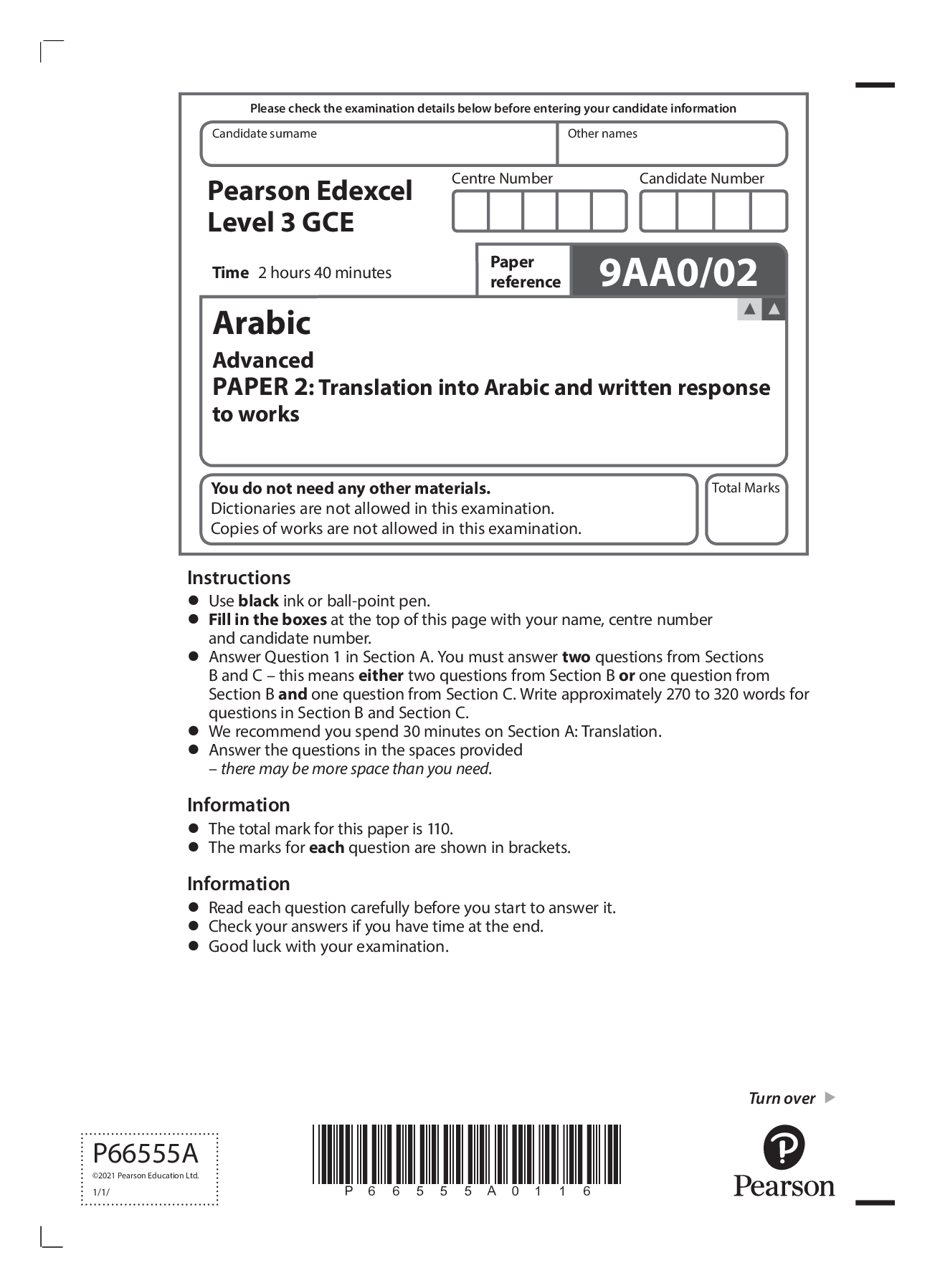

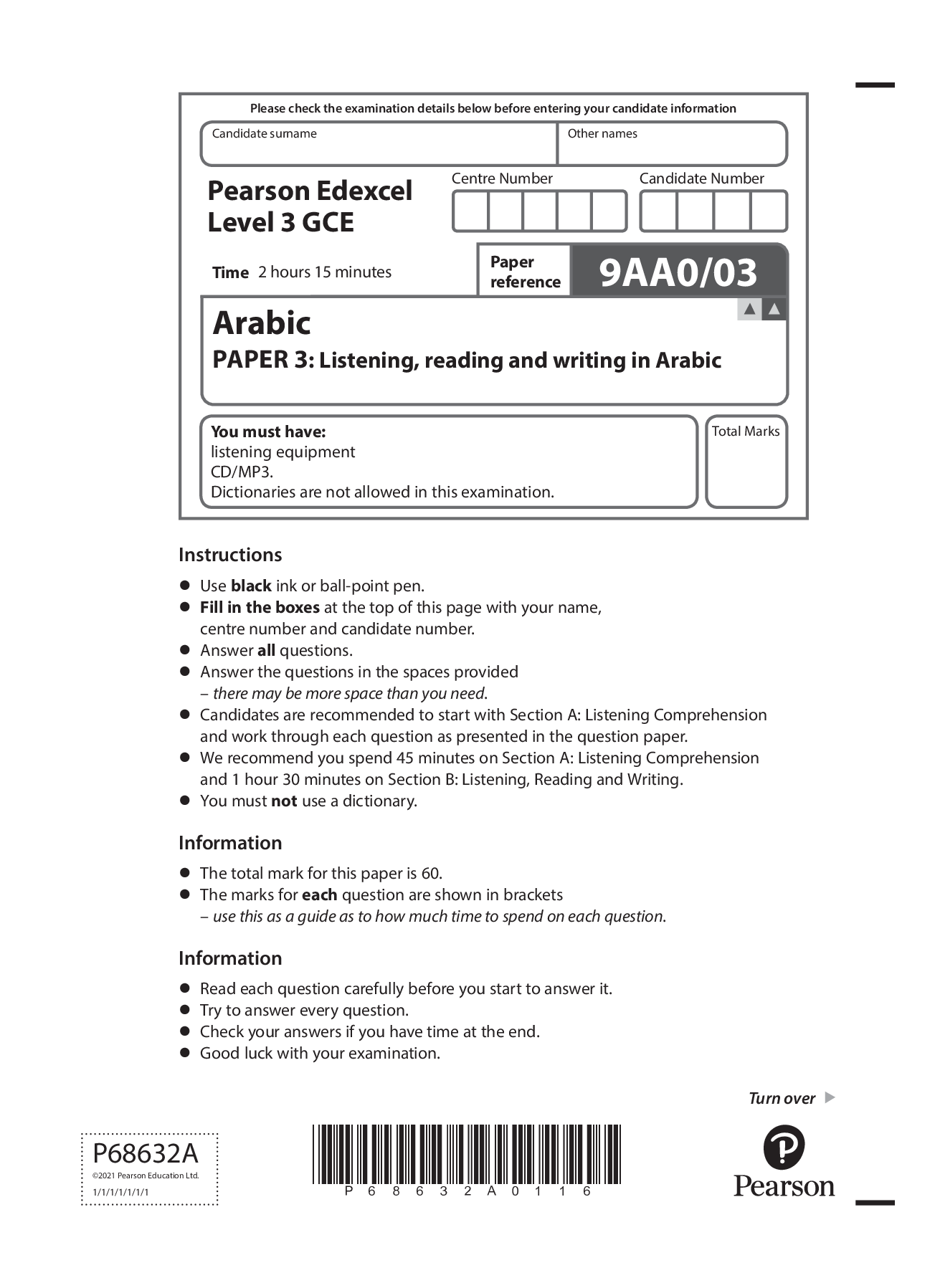



 Orthopedics Prescribing (103 Questions) – South University Savannah.png)
